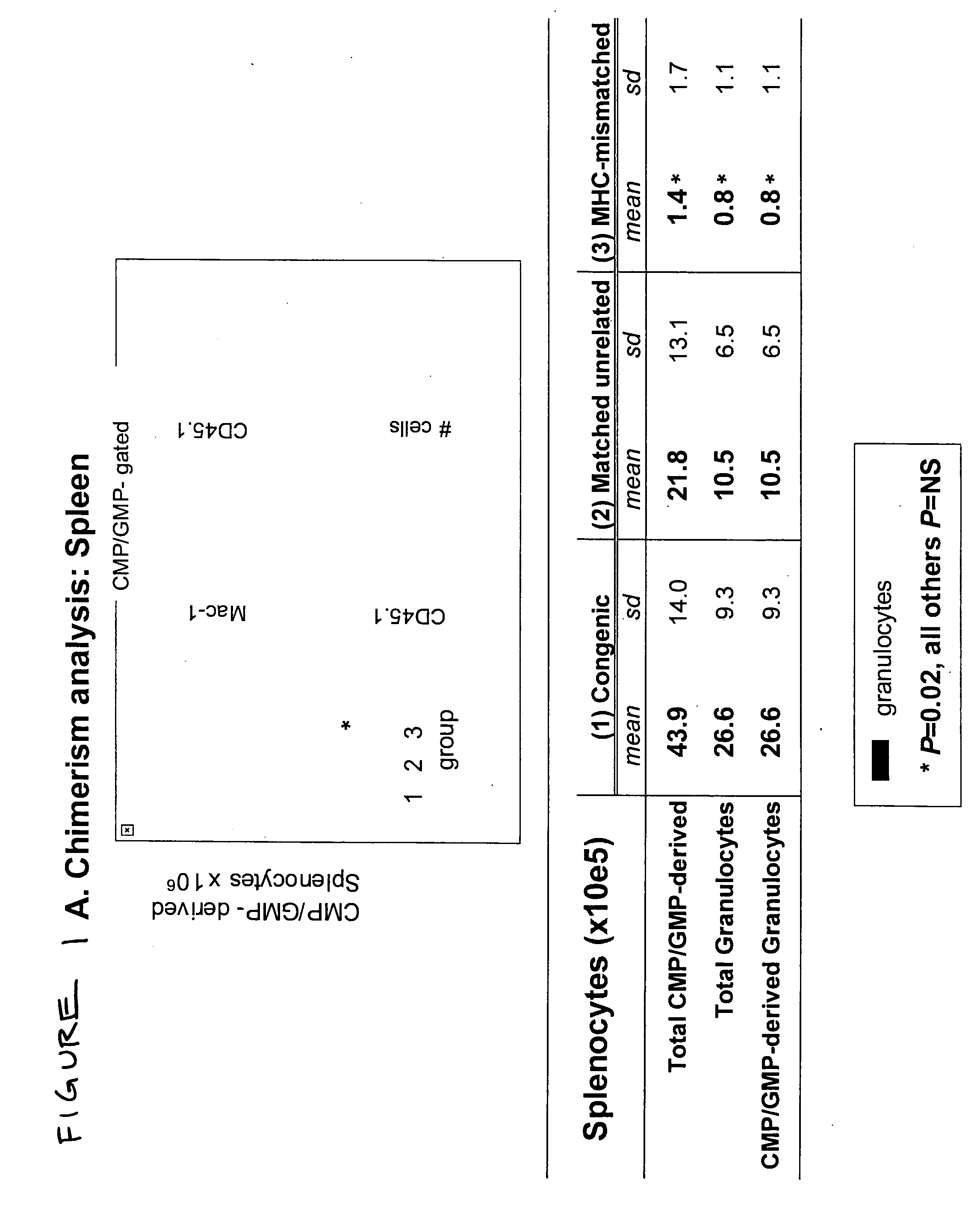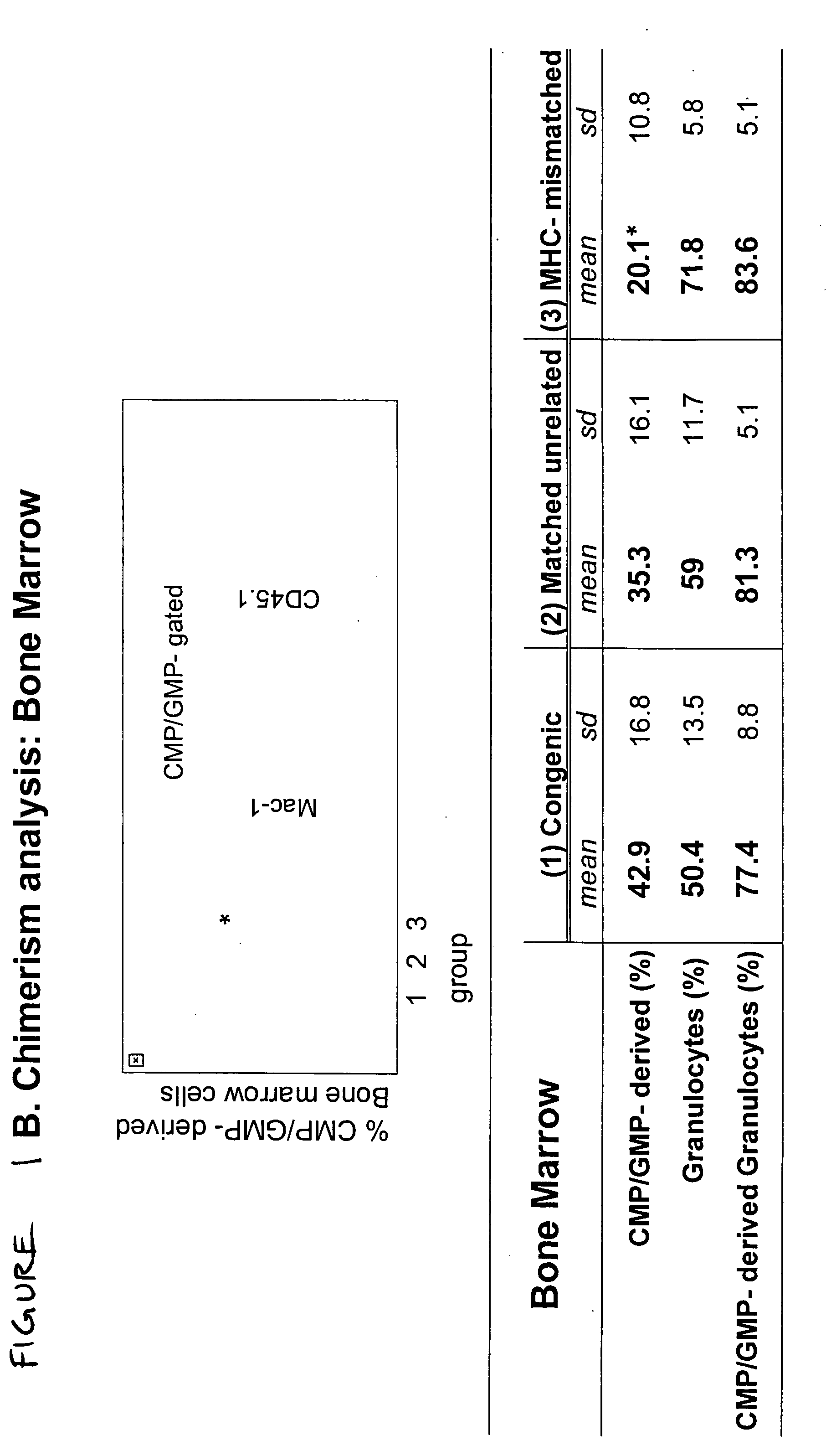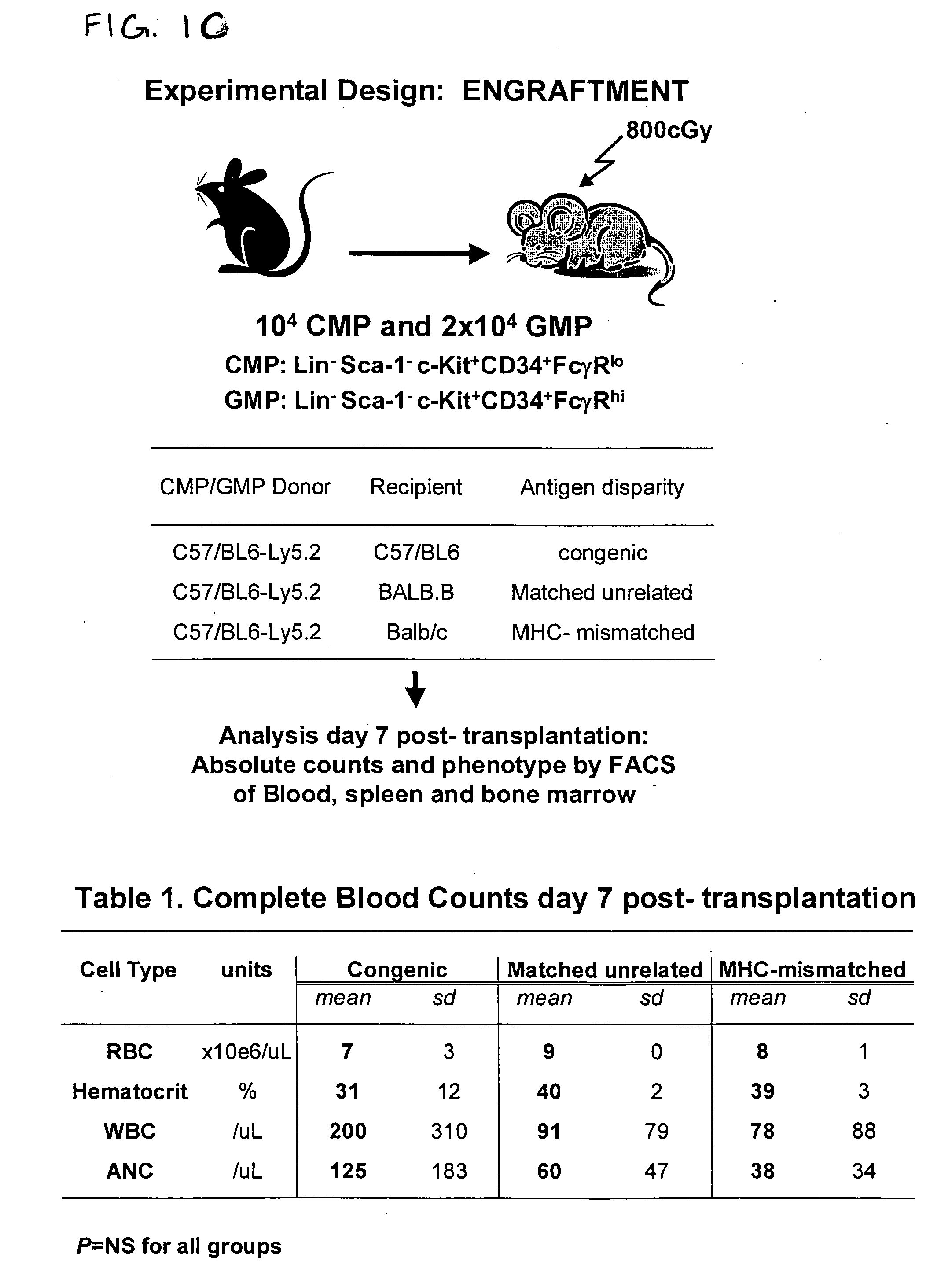Therapeutic uses of allogeneic myeloid progenitor cells
a technology of allogeneic myeloid progenitor cells and therapeutic use, which is applied in the direction of peptide/protein ingredients, extracellular fluid disorder, immunological disorders, etc., can solve the problems of thrombocytopenia, a common pattern of bleeding, and increased susceptibility to bacterial and fungal infections, so as to enhance the function of myeloid or erythroid lineage cells and stimulate growth
- Summary
- Abstract
- Description
- Claims
- Application Information
AI Technical Summary
Problems solved by technology
Method used
Image
Examples
example 1
The Ability of Allogeneic Committed Myeloid Progenitors to Protect Against Invasive Aspergillosis Following Myeloablative Treatment is not MHC-Restricted
[0065] The results presented herein demonstrate that allogeneic co-transplantation of CMP / GMP protects mice against lethal invasive aspergillosis, and, of great clinical significance, this protection is not MHC restricted. The number of CMP / GMP transplanted and the MCH-antigen disparity between the host and donor did not change the functional outcome even though the quantitative reconstitution of myeloid cells was decreased in hosts with greater antigen disparity. These results further support our hypothesis that graft engineering using hematopoietic progenitor cell populations can be useful to decrease susceptibility to infections in patients undergoing HCT. Fully allogeneic myeloid progenitor transplantations could improve upon granulocyte transfusions or administration of G-CSF to overcome periods of neutropenia of any cause.
M...
example 2
Single Infusion of Myeloid Progenitors Reduces Death from Asperqillus fumigatus Following Chemotherapy-Induced Neutropenia
[0088] Hematopoietic progenitors committed to the myeloid lineage, the common myeloid and granulocyte-monocyte progenitors (CMP / GMP) have been shown to protect against opportunistic pathogens following myeloablative radiation; however, the efficacy of this approach has not been studied in the setting of chemotherapy-induced neutropenia. In this mouse model, the infusion of CMP / GMP on the day after 5-fluorouracil (5-FU) administration (D+1) resulted in a significant increase in the number of splenic neutrophils by D+8 when compared to. 5-FU only controls (P=0.02), the majority of which were CMP / GMP-derived (54%). Moreover, 19% and 28% of neutrophils in the blood and bone marrow, respectively, were CMP / GMP-derived. Survival following intranasal challenge with the fungus Aspergillus fumigatus was significantly higher in CMP / GMP-infused mice than the controls (56% a...
example 3
Role of Myeloid Progenitors in Protection Against Radiation-Induced Gut Injury
[0102] Gastrointestinal mucositis is a serious complication of intensive chemotherapy and radiotherapy (XRT), resulting in severe pain, impaired nutrition, and an increased susceptibility to infection. As shown above, a single infusion of common myeloid and granulocyte-monocyte progenitors (CMP / GMP, c-kit+Scal+CD34CD16 / 32+Lin-Thy1-) protected mice against lethal challenge with bacterial or fungal pathogens following chemotherapy or myeloablative radiation. Additionally, this protection is not HLA-restricted and correlated with the tissue myeloid content.
[0103] CMP / GMP infusion against radiation-induced injury in the gastrointestinal mucosa and liver is now shown. Following 950 cGy irradiation, Balb / c mice received infusions of one of the following: [1] hematopoietic stem cells (HSC, c-kit+Thy1loLin-Sca-1+); or [2] freshly isolated 10,000 CMP / 20,000 GMP+HSC. In all cases, the HSC were MHC-matched (H2d), a...
PUM
| Property | Measurement | Unit |
|---|---|---|
| temperature | aaaaa | aaaaa |
| temperature | aaaaa | aaaaa |
| volume | aaaaa | aaaaa |
Abstract
Description
Claims
Application Information
 Login to View More
Login to View More - R&D
- Intellectual Property
- Life Sciences
- Materials
- Tech Scout
- Unparalleled Data Quality
- Higher Quality Content
- 60% Fewer Hallucinations
Browse by: Latest US Patents, China's latest patents, Technical Efficacy Thesaurus, Application Domain, Technology Topic, Popular Technical Reports.
© 2025 PatSnap. All rights reserved.Legal|Privacy policy|Modern Slavery Act Transparency Statement|Sitemap|About US| Contact US: help@patsnap.com



